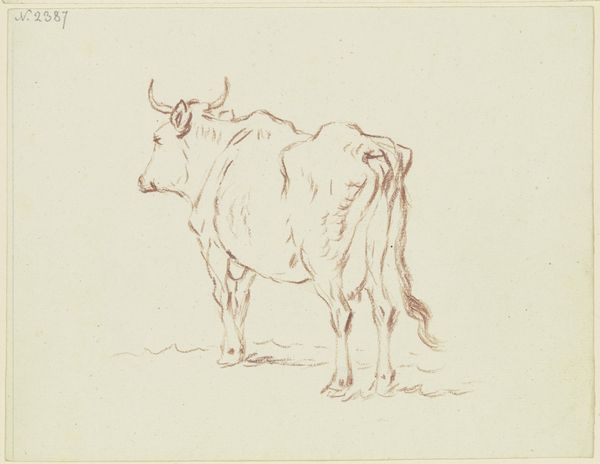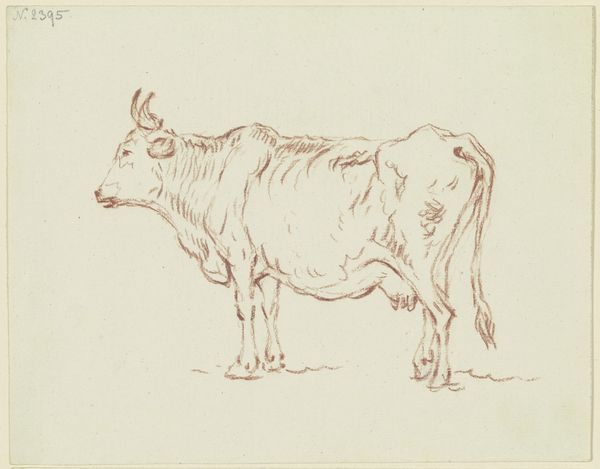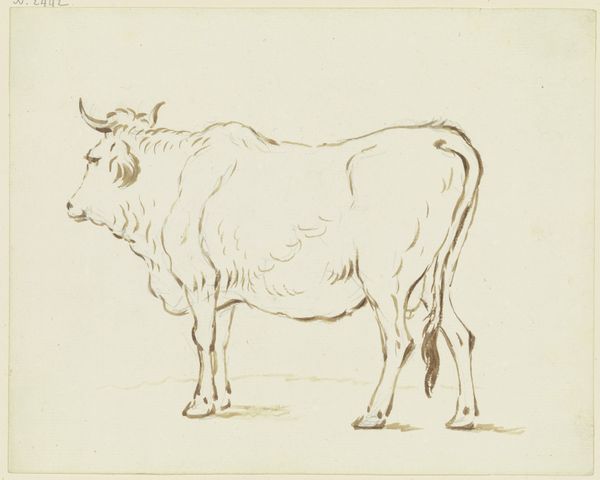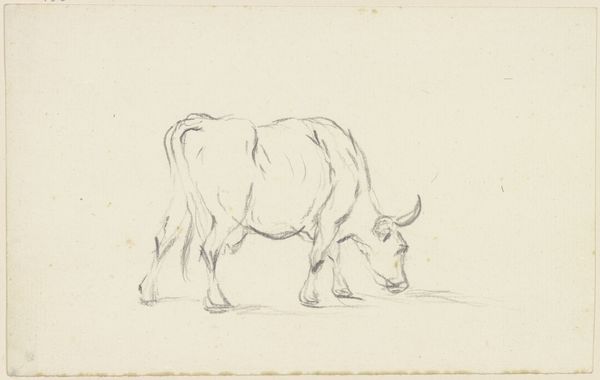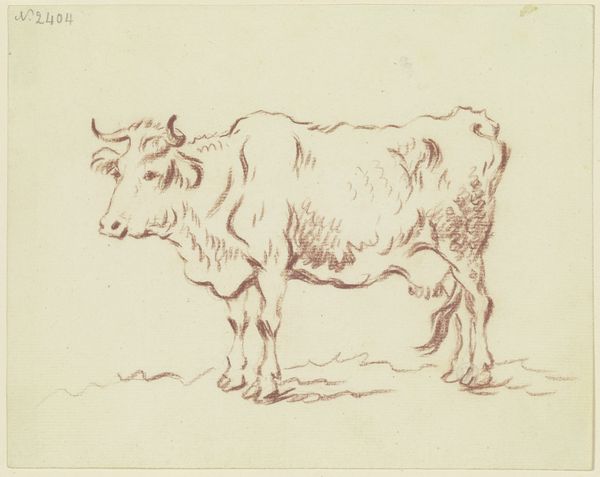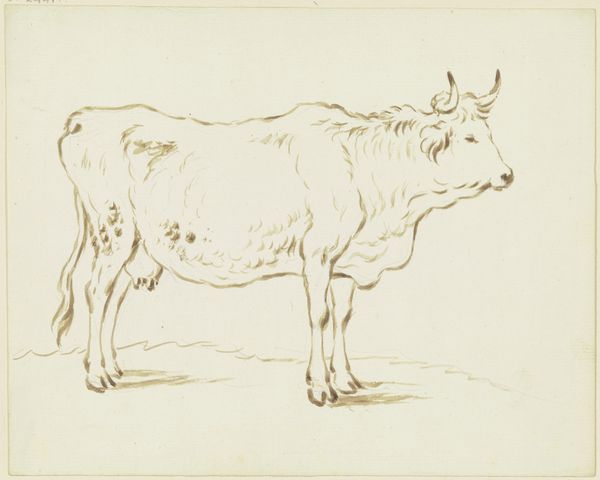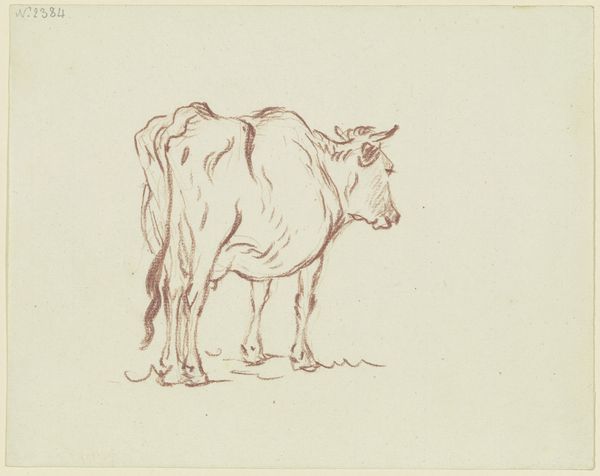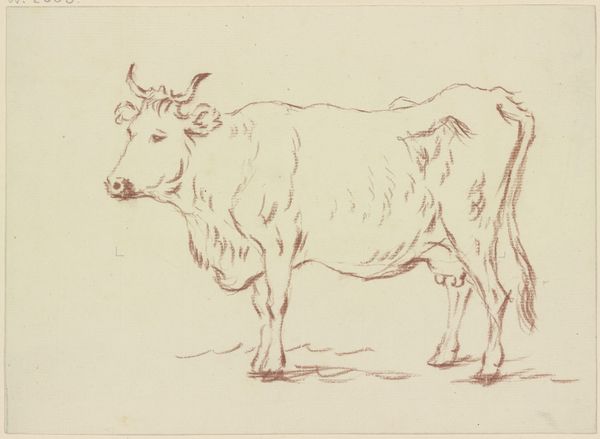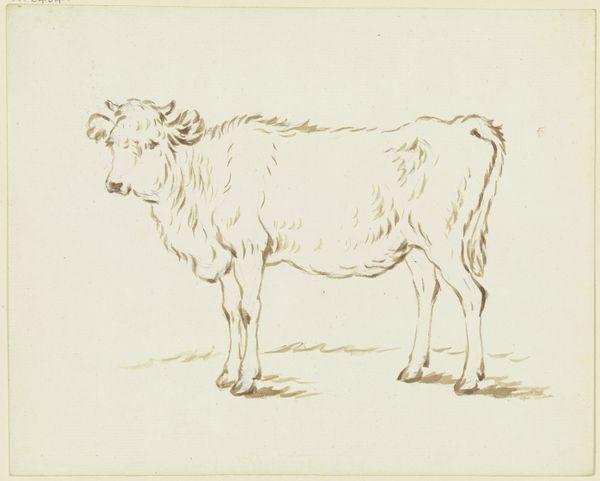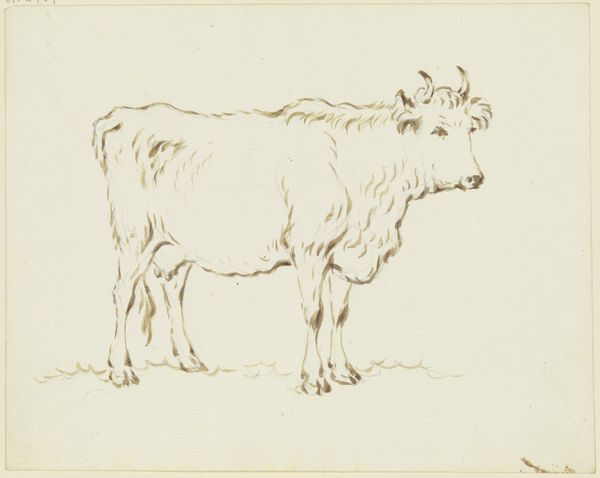
drawing
#
drawing
#
landscape
#
etching
#
figuration
#
15_18th-century
#
academic-art
#
realism
Copyright: Public Domain
Curator: We're looking at a drawing here at the Städel Museum; "Standing cow to the left" by Friedrich Wilhelm Hirt. It's an etching. What's catching your eye about this piece? Editor: Well, it's got this understated, almost melancholy feel. The single tone and sparse background make her feel solitary, like a farm animal captured outside its more lively, natural environment. Curator: Precisely. Works like this showcase a growing 18th-century interest in representing nature, particularly rural life, and reflect emerging scientific approaches to observation and classification of the natural world. The intent might have been for study as much as art. Editor: A study, yes! But there's something vulnerable about this particular cow. It looks tired or resigned, doesn’t it? The slight droop of her head... I almost feel a bit sorry for it, being observed and documented like a specimen. Curator: It raises interesting questions about the animal’s status, doesn’t it? Hirt, like other artists of the time, was producing images for an expanding market for prints, meeting demand from a bourgeoisie with a growing appetite for landscape and figuration, even depictions of livestock. Editor: So, was it high art, propaganda or both? Because the cow almost appears allegorical. It could stand in for pastoral ideals versus harsh realities. It’s also very possible that the artist was merely trying to capture the animal's physicality and its rustic, subdued aura. Curator: Absolutely. Remember the cultural role livestock played – emblems of rural productivity, wealth, and an enduring connection to the land. Artists participated in this discourse. The market influenced even seemingly straightforward animal studies. Editor: Right. I’m also taken by the line work, which conveys a sense of light falling softly over the animal's form, giving it weight and dimension even with minimal shading. The stark setting only adds to this effect. Curator: It also demonstrates the academic approach; the lines accurately depict form and surface texture with careful strokes. And notice how that line gives dimension and an impression of mass in the body of the cow. The subtle realism draws our attention. Editor: Indeed. Thinking about this little etching now, I appreciate how a humble drawing of a cow can reveal so much about the artist’s intentions, the social values of the time, and my own emotional responses. Curator: And for me it underscores the importance of understanding art as situated within broader cultural trends and markets that influence everything, even a seemingly simple depiction of a standing cow.
Comments
No comments
Be the first to comment and join the conversation on the ultimate creative platform.

